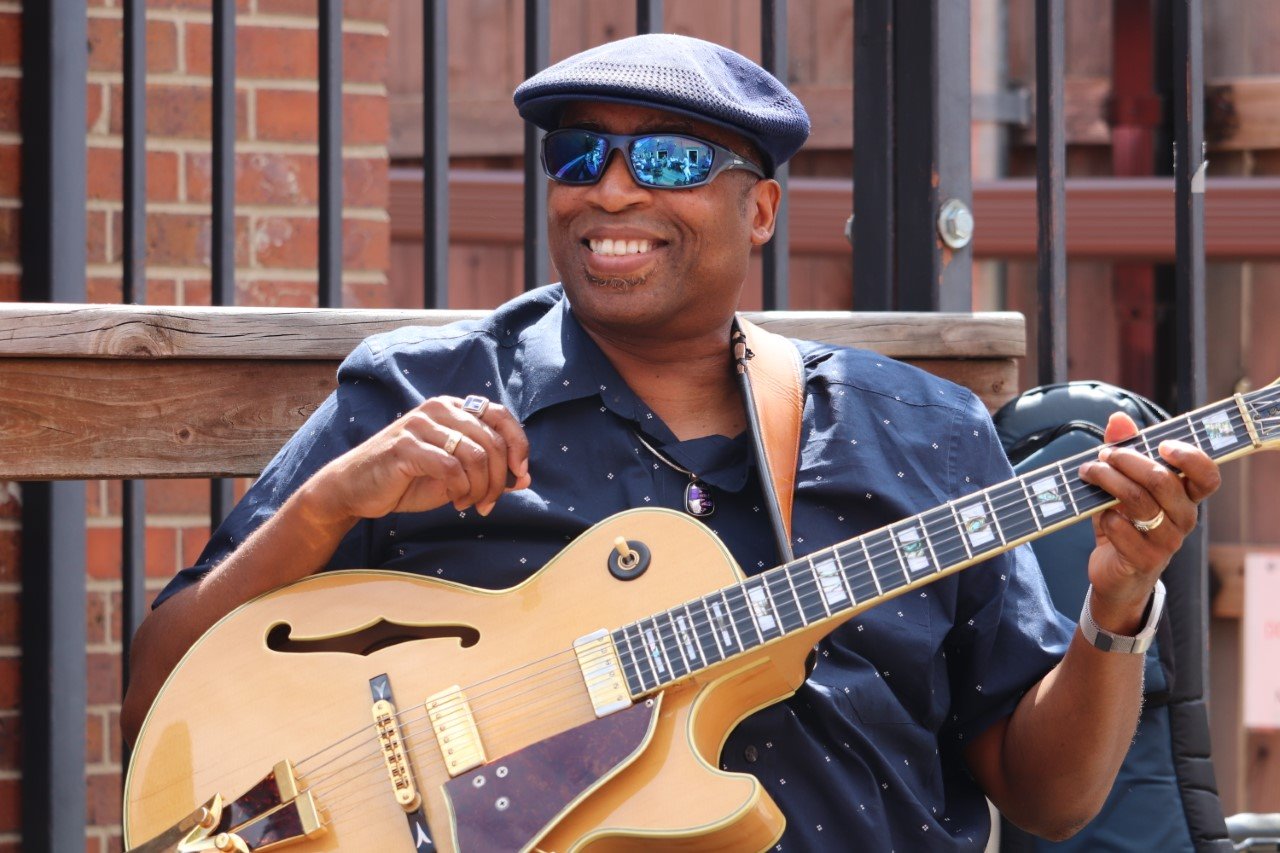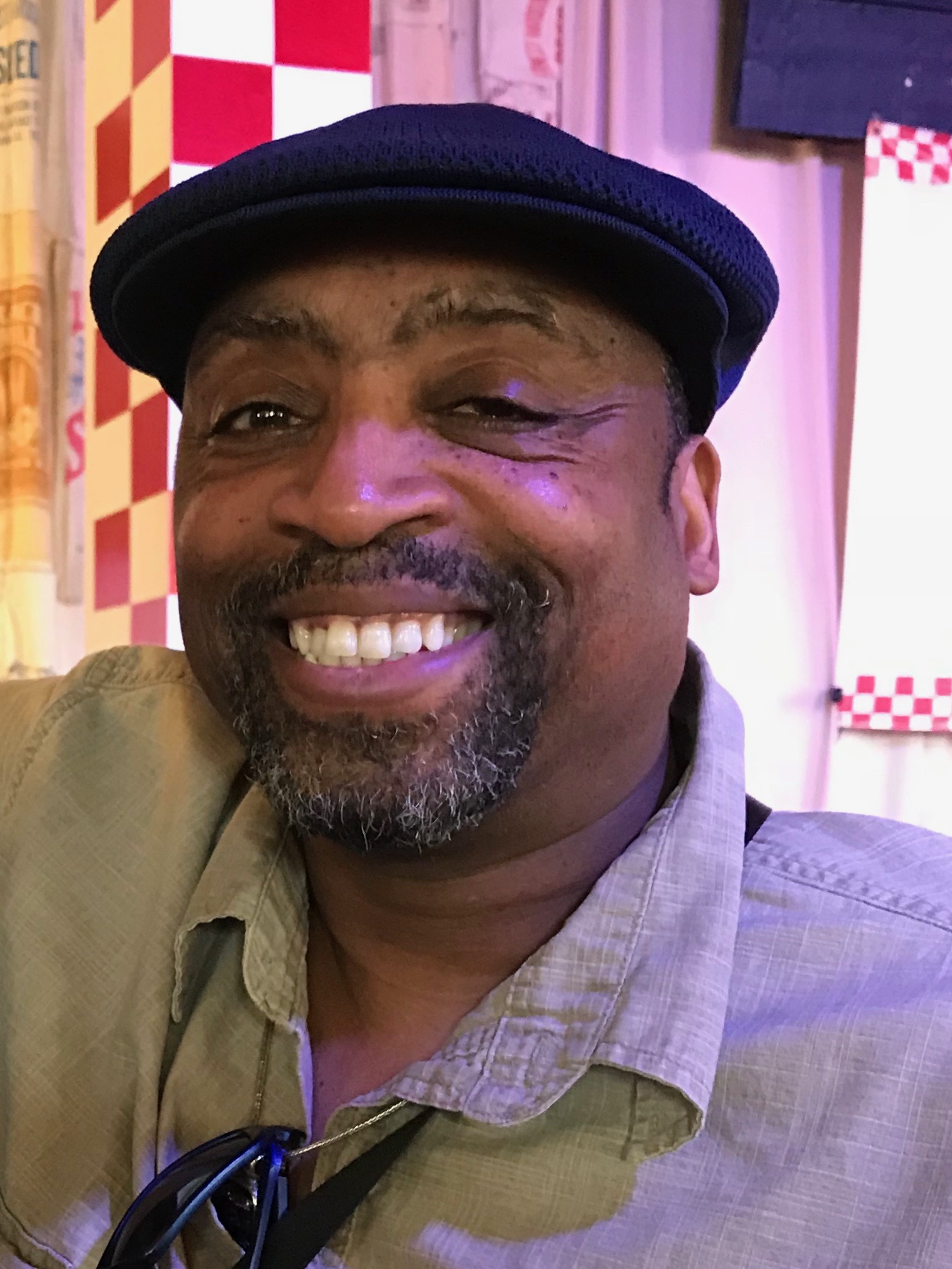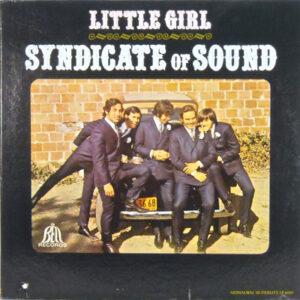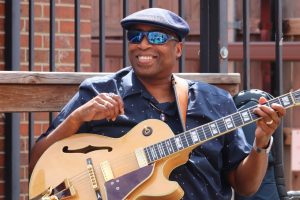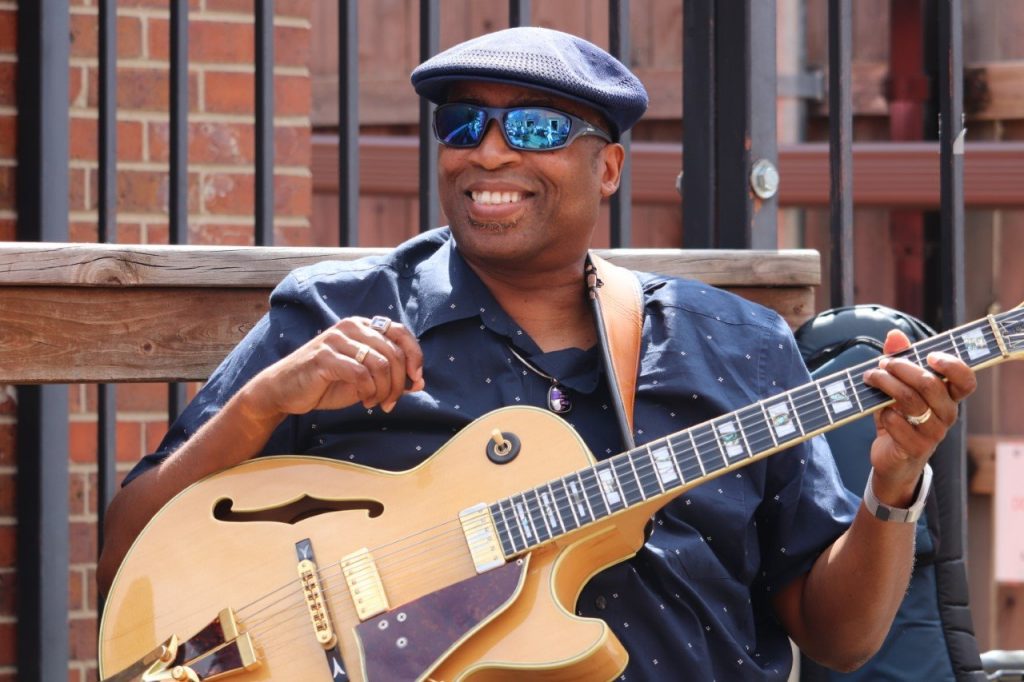
A portrait of Wayne Goins
Every Sunday between 10 a.m. and noon, I show up to the Bluestem Bistro in Aggieville to play with my jazz guitar duo partner, "Slick" Rick Smith. Rick is a very cool guy. A former student of mine back in the early 2000s, he's all grown up now and is quite the serious guitarist (and I don't mind taking my share of credit for that.) Rick plays a mean 6-string Gibson jazz guitar, but he also plays an even sweeter 7-string Ibanez (I can take no credit for that.) We've been playing as a duo at the Bistro since 2015, and we rarely miss a Sunday. We make a great team, telepathically playing off of each other's ideas, weaving melodic, harmonic and rhythmic tapestries over dozens of tunes throughout the course of two hours.
I mention Rick because he's the guy who has been an ardent admirer of the legendary jazz guitar icon Grant Green. Rick was totally into Green when I first started teaching him back in the day. I myself was no stranger, having recorded two songs on my first album that were directly influenced by Grant's unique style—I did my best imitation of him when I recorded the title track of his 1965 Blue Note release of Idle Moments on my first solo album called West Coast Swing, after I started my record company, Little Apple Records in 2005. And somewhere along the way I stumbled across his version of "Joshua Fit De Battle Ob Jericho," when I discovered Grant's album Feelin' The Spirit, recorded in 1963 on Blue Note. I always liked Green's clear tone and bluesy single-note lines. Still, he wasn't one of the guys I fell in love with when I first started playing jazz. It's kind of surprising that someone like me wouldn't have been naturally gravitating toward a dude who was a black, urban-raised, blues-based jazz guitarist who could also throw some funk down on you at the drop of a hat—that's actually quite my style too, if you really wanna know the truth. So why wasn't Grant Green my main man?
Looking back on it now, I realize why this didn't manifest itself: It was just a matter of pure happenstance that no one—at least in my memory—ever brought him to my attention. Simple as that. Yeah, I'd heard all about George Benson and Wes Montgomery by the time I graduated from high school and went to college—I even has developed some stylistic nuance to the point where people said I sounded a lot like George (I still get that.) Indeed, Benson became my #1 guy, and I emulated him a lot—bought as many records as I could, memorized the solos, etc. Eventually, Kenny Burrell entered the picture, and I fell into that wonderful rabbit hole as well. (I actually met him—twice—and even interviewed him in his Atlanta hotel or an article I wrote for Jazz Improv magazine. I also was lucky enough to play with him onstage at Royce Hall for his 75th birthday party on UCLA campus!) Still, Grant Green's body of work never played a role in the arc of my learning curve. Through no fault of my own, he just hadn't yet emerged as a central figure.
Fast forward a few decades later, and here comes my student Rick Smith, who is seemingly obsessed with Grant Green, and has sort of modeled his style off of Green's approach – clean single lines, repetitious phrasing, bluesy riffs, and sparse chords, all draped over jazz standards. Rick talked a lot about how much he adored Grant Green, owned his albums, studied the solos and all that. Me? I didn't own but maybe two CDs, and hadn't heard any of the many other classic sessions Green had released on Blue Note (not to mention the lengthy and equally important post-bop funk phase Green pursued after he left Blue Note in frustration when he perceived he was, relatively speaking, being ignored and underappreciated by the fans, press, and media in favor of – you guessed it—George Benson and Wes Montgomery).
So it was no coincidence that Grant wasn't exactly on my radar—you kinda had to be in the know—or at least have your coat-tail pulled by someone who cared enough to hip you to him – if you were gonna enter into Grant's realm of guitar greatness. This was all too unfortunate for me, though. I was then, and, up until now, fairly lacking in my formal education due to extremely poor attendance at the illustrious Green University.
Well, good people, that ends today. I am officially announcing my self-induced state of obsession for all things Green, and, for the next many articles, will dedicate myself to investigating the inherent value and quality of the early Blue Note sessions of Grant Green. And, as it turns out, a good-size chunk of his recorded output happened all in one year—1961 to be exact—which is, coincidentally, the year I was born (well waddya know, there's one more thing he and I have in common!)
Now, just think for a moment about this series of coincidences:
1) It was literally ten years ago I bought his biography written by Sharony Andrews Green (married to Grant's son Grant Green, Jr. at that time);
2.) I ordered the book as a used copy on Amazon, and lo and behold, as it turned out, when the book arrived, there on the opening title page is a personalized note, which was inscribed, dated and signed by Sharony herself;
3.) I'm currently doing a full-length interview with Grant's other son (Gregory—who actually is the one who goes by the professional moniker of Grant Green, Jr.!) for Jazz Guitar Today, a cool online jazz magazine I write for;
4) It's exactly sixty years from Grant's epic year of 1961, when he recorded no less than 27 albums in his FIRST year at Blue Note—many of which this series of articles will be based upon.
So, let's start at the beginning, shall we? There's a lot to decipher here, so I plan on taking only a coupla albums at a time—I don't wanna bite off more than I can chew. According to the Allmusic Guide, Grant's real first stand wasn't exactly on Blue Note, nor was it his own session—he appeared as a sideman for tenor saxophonist Jimmy Forrest (b.1920 in St. Louis), who'd already made his mark as a rhythm & blues player in the early 50's. His big breakthrough hit was the instrumental, "Night Train," a funky, swingin' piece that was all the rage, reaching #1 on the Billboard R&B charts. A good portion of the song was a direct steal from a melodic line Duke Ellington wrote in the tune, "Happy-Go-Lucky-Local." Not too sure Duke was actually happy about that, but, I digress…
After his R&B phase had basically run its course, Jimmy basically returned to his roots where he first made his reputation playing with the likes of Ellington, Jay McShann, and Andy Kirk. Since my search is all about Grant Green, I had to go through Forrest to hear where it all started. I hopped on the eBay, Amazon, and Discogs websites to see what I could find. The Discogs search revealed that Forrest had hired Grant Green to play guitar on his album, along with pianist Harold Mabern, bassist Gene Ramey, and drummer Elvin Jones. The liner notes of the album reveal a bit more, written by none other than Joe Segal, legendary club owner of the renowned Jazz Showcase, the oldest, and one of the most prominent clubs in the country since 1947 (he died last year in 2020 at the age of 94). According to Segal, evidently the majority of the band came fully intact as the backing band for trumpeter Harry "Sweets" Edison, the former member of Count Basie Band. (I found this to be accurate. In Grant Green's biography [written by his daughter-in-law, Sharony Green], she reveals on p. 64 that none other than drummer Elvin Jones was totally enamored by Grant's playing from the very first time he was introduced by Forrest to Grant in 1956, when Green was on a gig in a tiny bar in St. Louis. Forrest, among the members of this particular combo, was the only constant wingman in many of Edison's recordings of that period.) More importantly, Jimmy was the one who specifically called Grant Green to come from St. Louis to join him in Chicago for this recording session.
The music was recorded on Delmark Records, the oldest American jazz and blues independent record label in America—founded in 1958. The company is based in Chicago, which is where I was born and raised (hey, another thing Grant and I have in common!). Bob Koester (rest his soul) was the original owner and was a man I actually met—twice—when I interviewed him while I was working on research for That's All Right: The Jimmy Rogers Story, the book I wrote on the Chicago blues legend who was the guitarist for Muddy Waters. Koester's company had been in three different locations over the years: during the 60s it was located on 7 West Grand, then it moved in the 70s to 4243 Lincoln Avenue. It's currently situated at 4121 N. Rockwell. (The Lincoln address is where I met and interviewed Koester back in the early 2000's.)
The music was recorded from December 12-20 in 1959, but for some reason or other, it was not released until 1964 – first in England, then here in the states. Grant plays on tracks 1, 2, 4, 5 & 7. Details are as follows:
Jimmy Forrest, All The Gin Is Gone
- Label: 77 Records - 77 LA 12/24
- Format: Vinyl, LP, Album
Tracklist
- "All the Gin Is Gone" - 4:46
- "Laura" (David Raksin, Johnny Mercer) - 6:41
- "You Go to My Head" (J. Fred Coots, Haven Gillespie) - 6:31 [Additional track on CD reissue]
- "Myra" - 5:30
- "Caravan" (Juan Tizol, Duke Ellington, Irving Mills) - 9:23
- "What's New?" (Bob Haggart, Johnny Burke) - 2:57
- "Sunkenfoal" - 5:18
Personnel
- Jimmy Forrest - tenor saxophone
- Grant Green - guitar (tracks 1, 2, 4, 5 & 7)
- Harold Mabern - piano
- Gene Ramey - bass
- Elvin Jones - drums
For some reason, Koester never released the music, but apparently he leased the music to a British company. Therefore, this original album was released in 1964 England by 77 Records, with a red label—in this format:
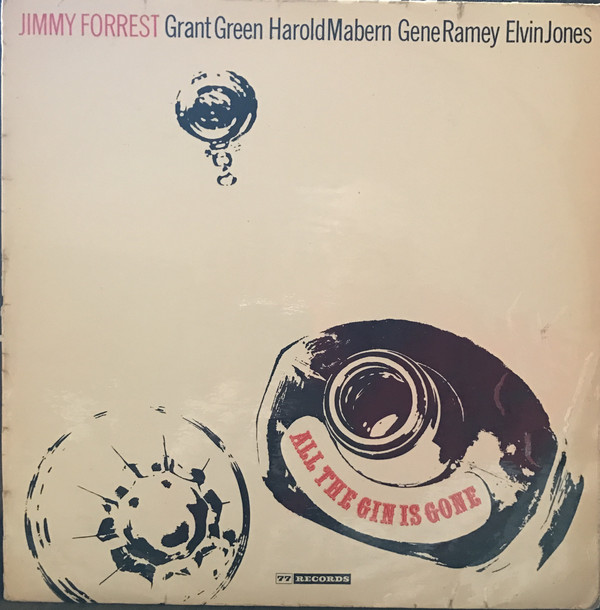
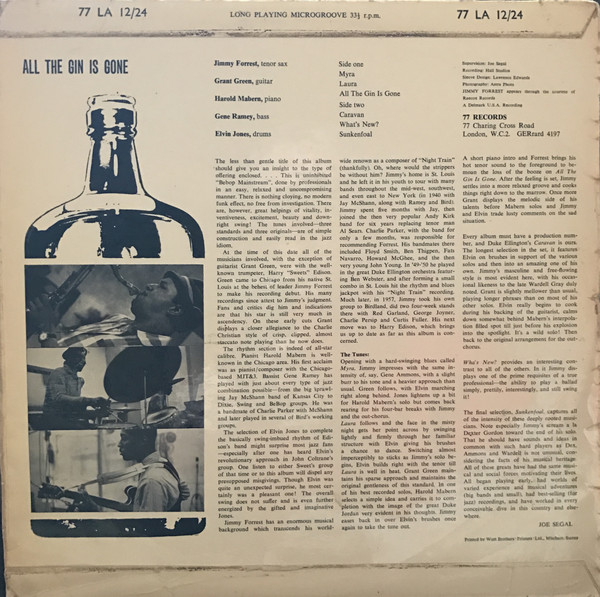
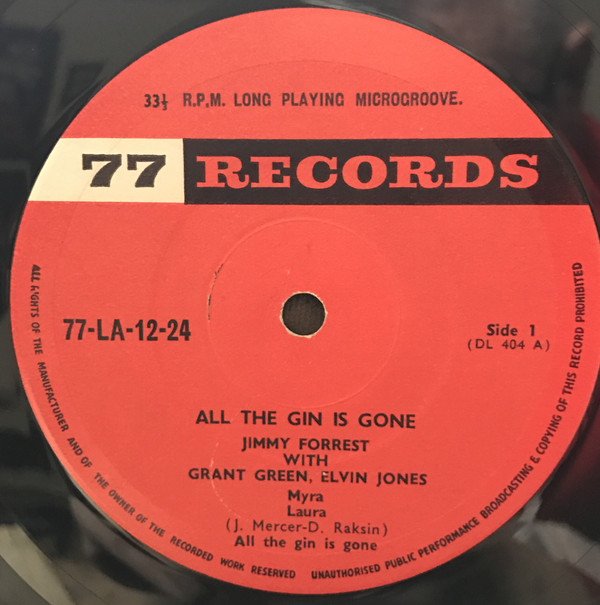
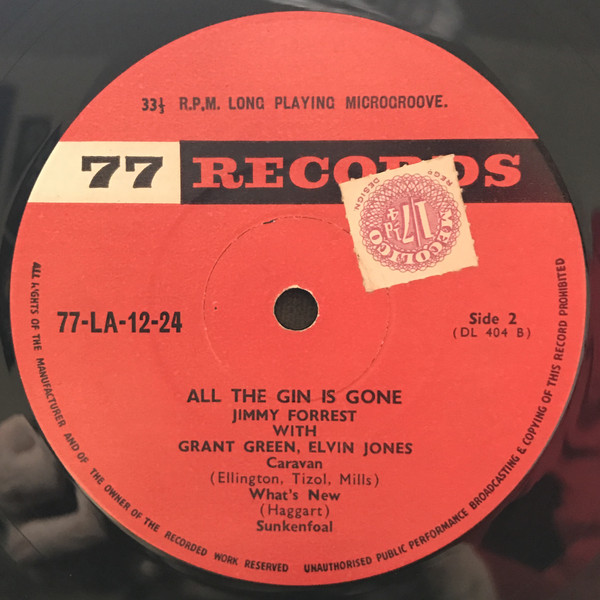
But wait—the plot thickens. Even before there was a stateside Delmark pressing, there was this British release:
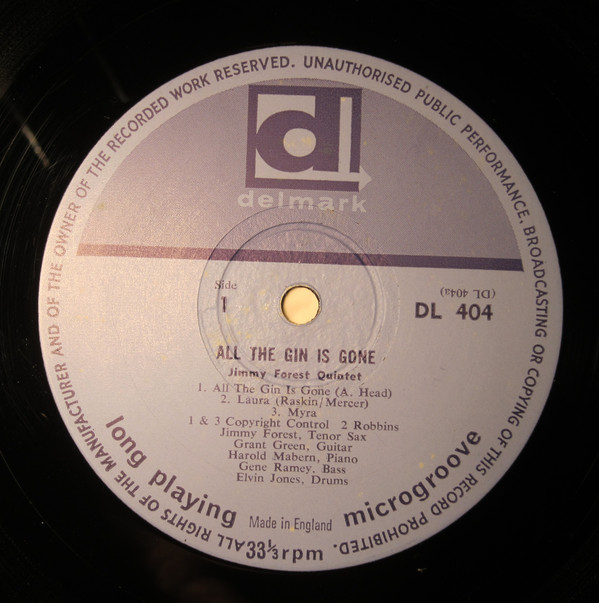
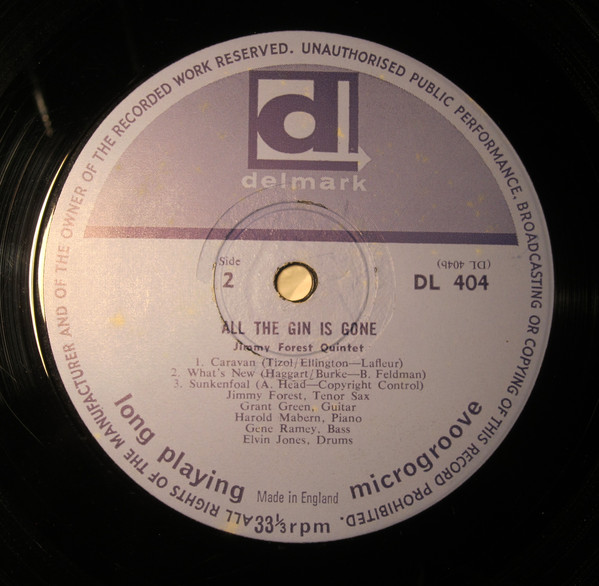
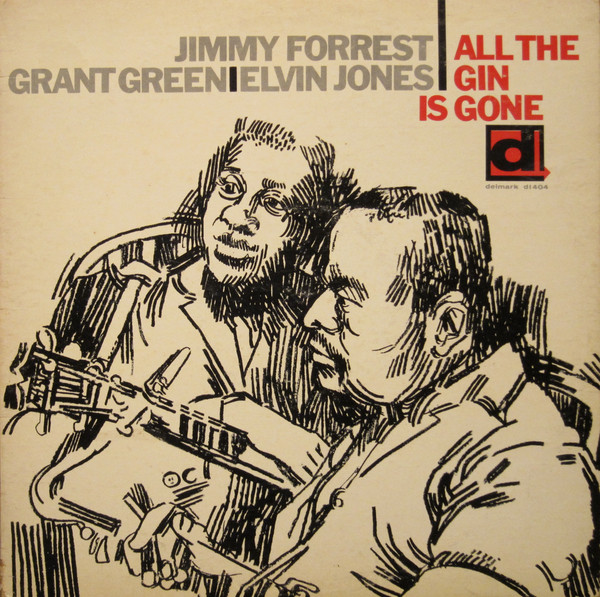
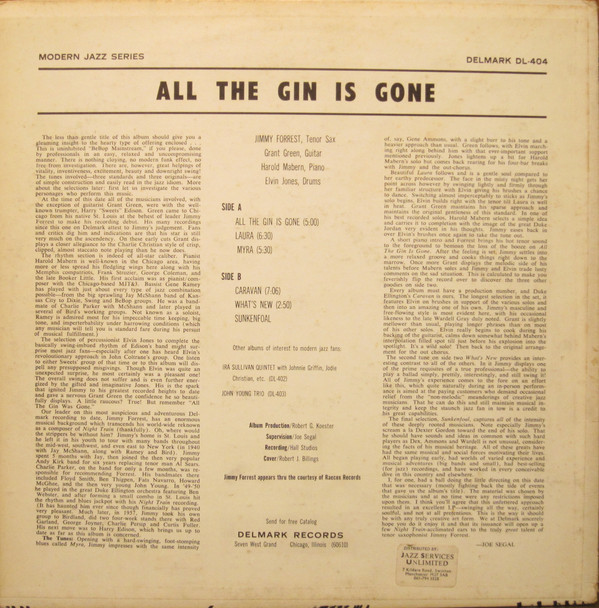
FINALLY, The U.S issue of All The Gin Is Gone (DL-404) was released in 1965 and was the first straight-ahead jazz album Forrest made. The original U.S. album cover was an ink drawing of Forrest and Green huddled together, with fairly sad looks on their faces—the image hints at the fact that they appear to be commiserating about the notion that, indeed, all this gin is gone…
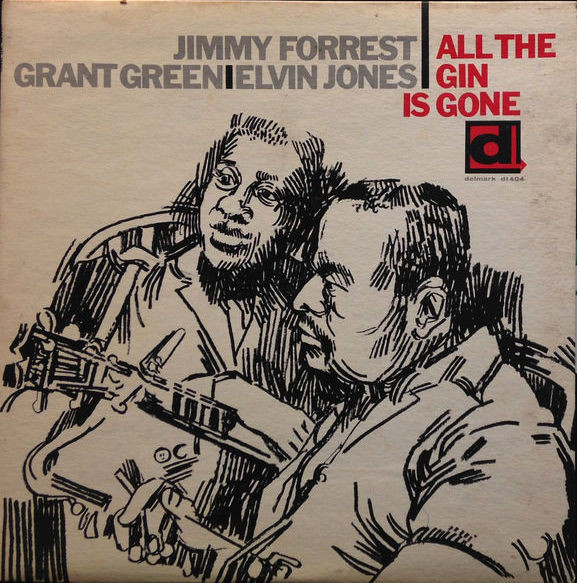
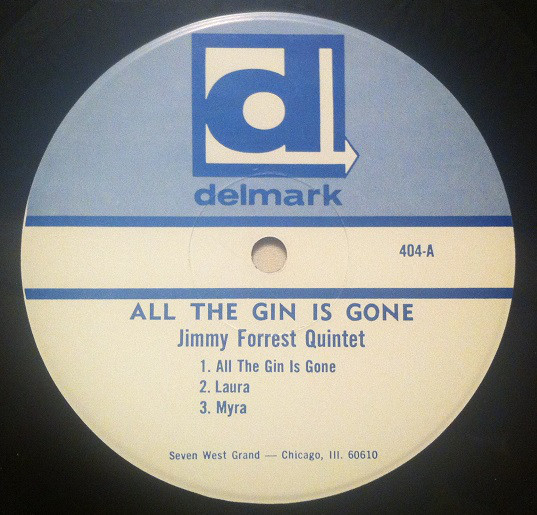
The title track, along with "Myra," and "Sunkenfoal" are originals written by Forrest; the others are jazz standards—basically cover tunes. Then, I discovered there was a kind of "Part 2" to this hunt—another Forrest album released on Delmark in 1972 called Black Forrest. (DL-427) On this album were outtakes and a coupla other previously unreleased tunes that didn't make the first album. Obviously, I just had to have it.
The prices for these original LPs are fairly expensive (in the hundreds) so I went to my second-tier source—eBay. There I struck gold, and found this ad (note the misspelling of Jimmy's last name):
- JIMMY FOREST - 2 ALBUMS (2 LPs) LOT - MADE IN JAPAN
- ALL NM Wax!! Vinyl OBI Green
- ALL THE GIN IS GONE Norma CEJC 00187
- BLACK FOREST Norma CEJC 00188
He had both albums—exactly what I needed! I offered the seller a lower price that included shipping, and they went for it, so I got the pair for less than $100, shipping included. The albums came in exquisite condition, with all the Japanese import paperwork inside the shrinkwrap:
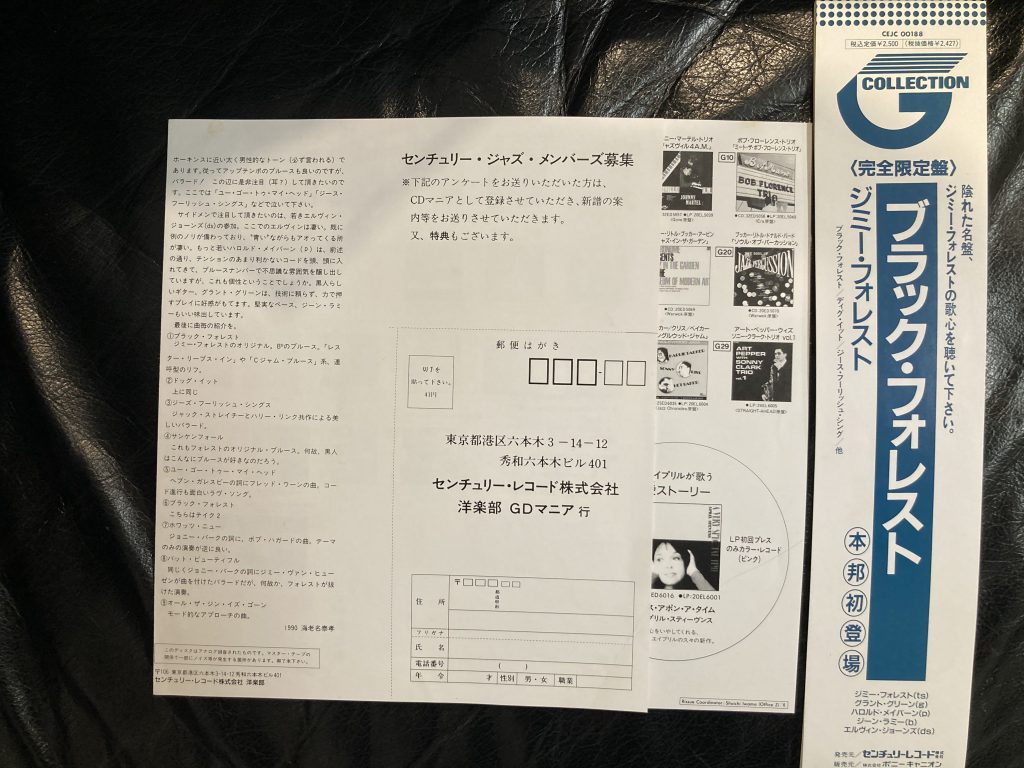
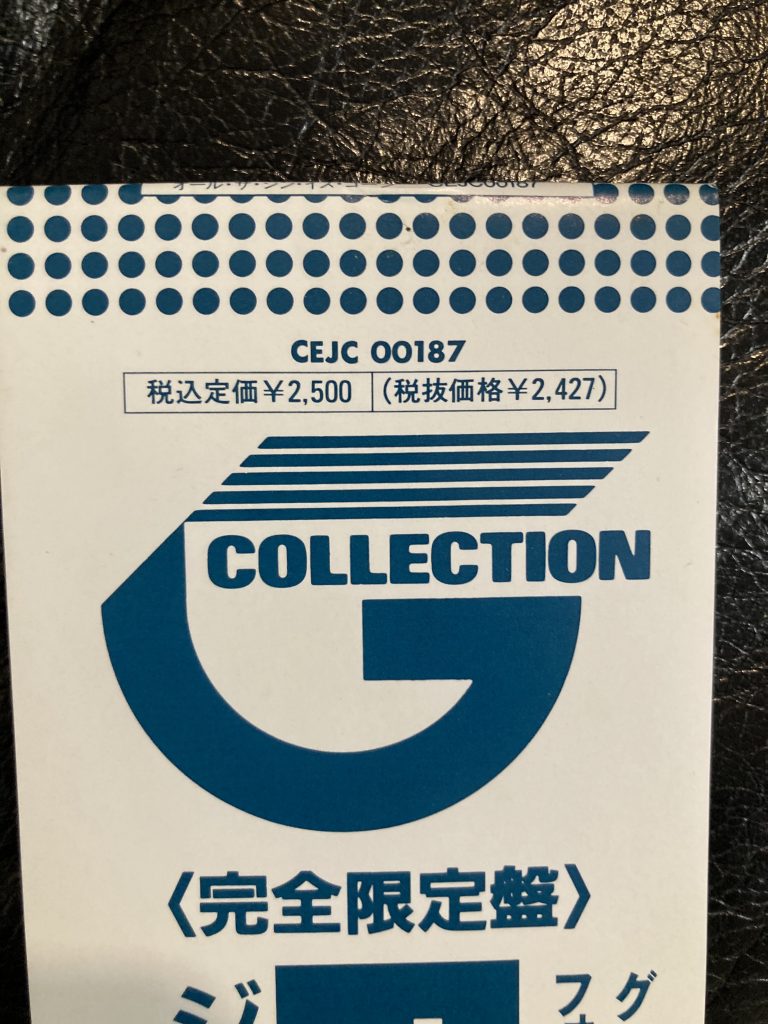
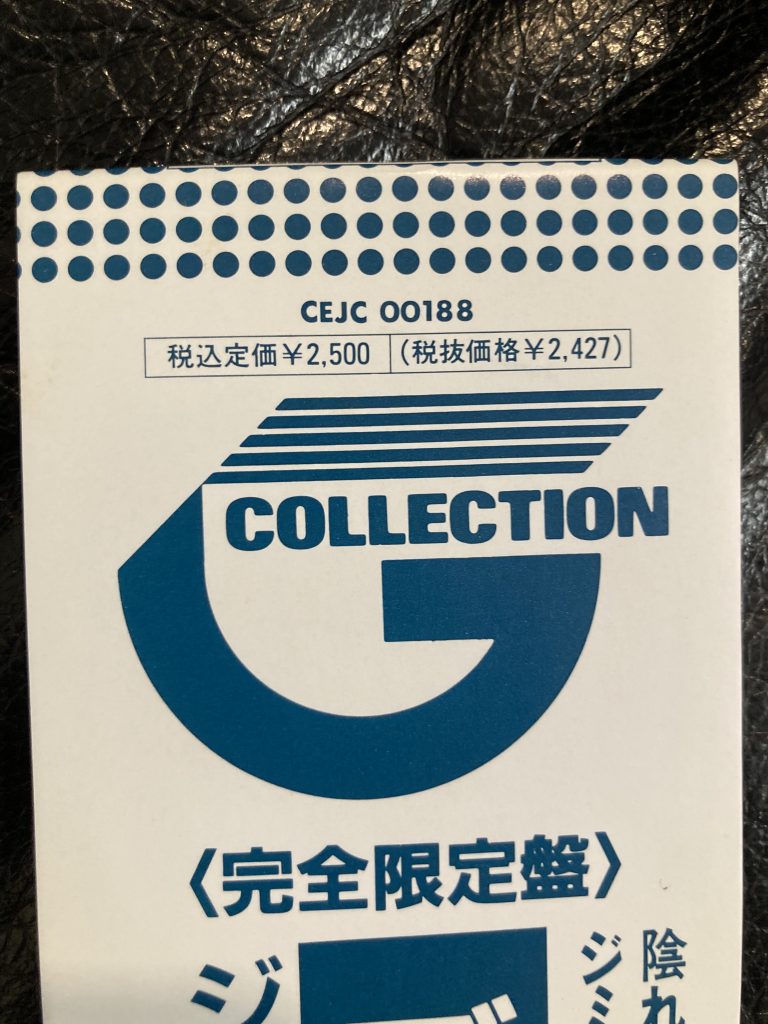
First, the All The Gin Is Gone album:

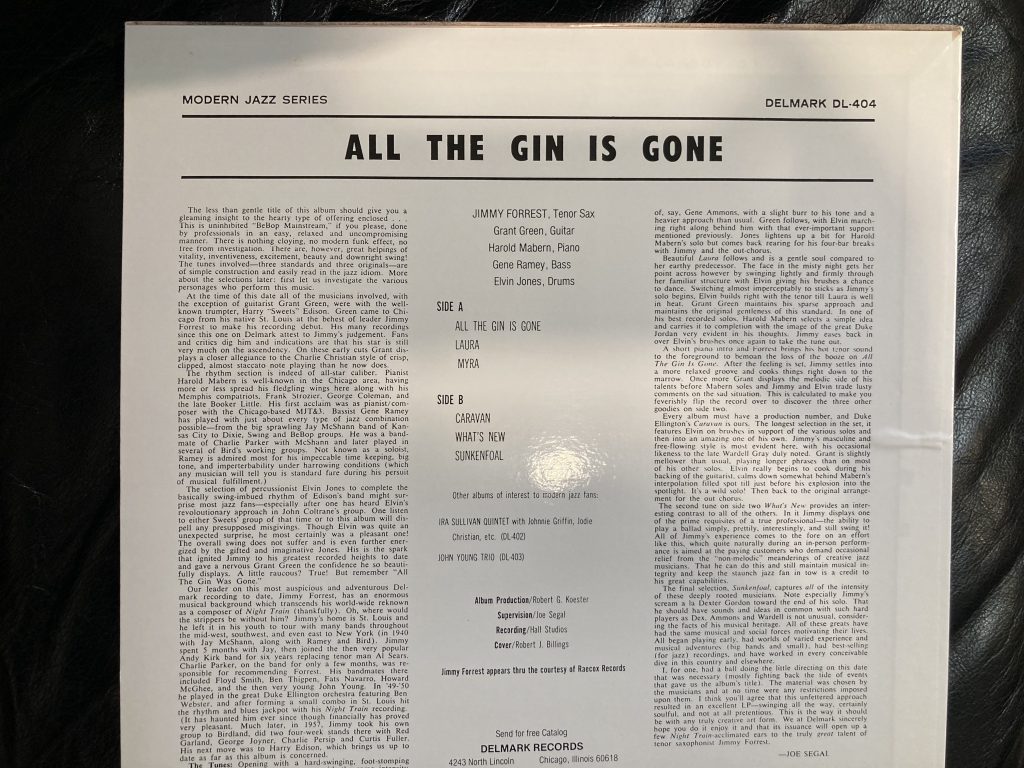
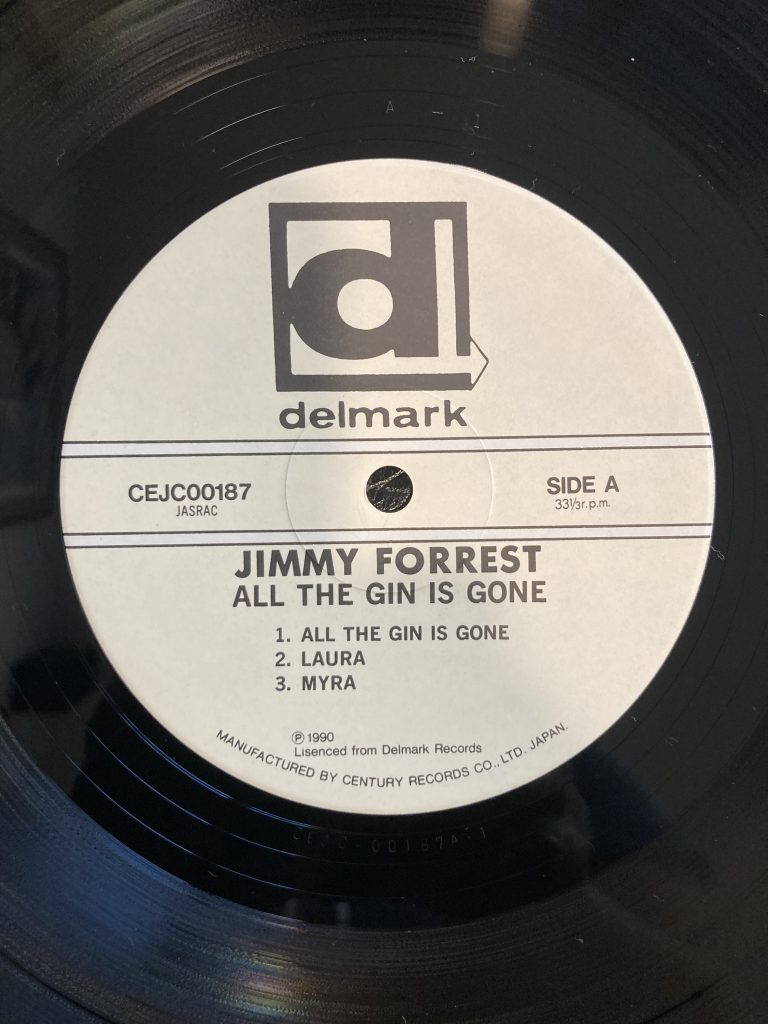
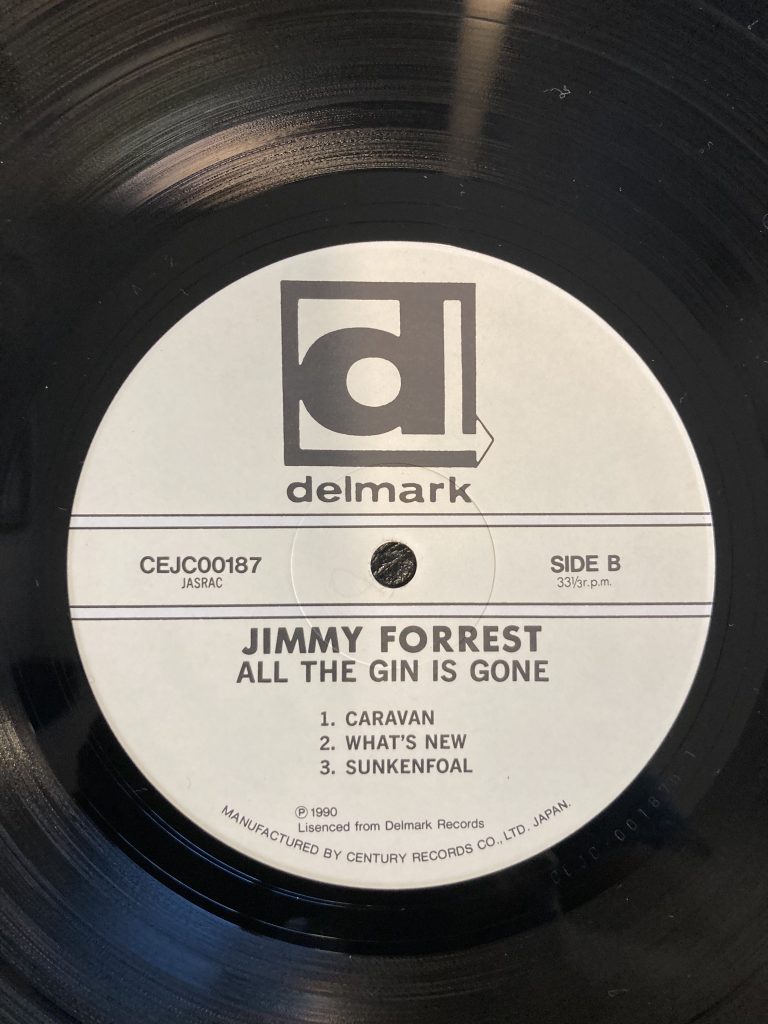
Jimmy Forrest, All The Gin Is Gone
- Label: Delmark Records -DL 404
- Format: Vinyl, LP, Album
- Country: US
- Released: 1965
- Genre: Jazz
- Style: Bop
Tracklist
- A1 All The Gin Is Gone
- A2 Laura
- A3 Myra
- B1 Caravan
- B2 What's New
- B3 Sunkenfoal
Now the Black Forrest album...
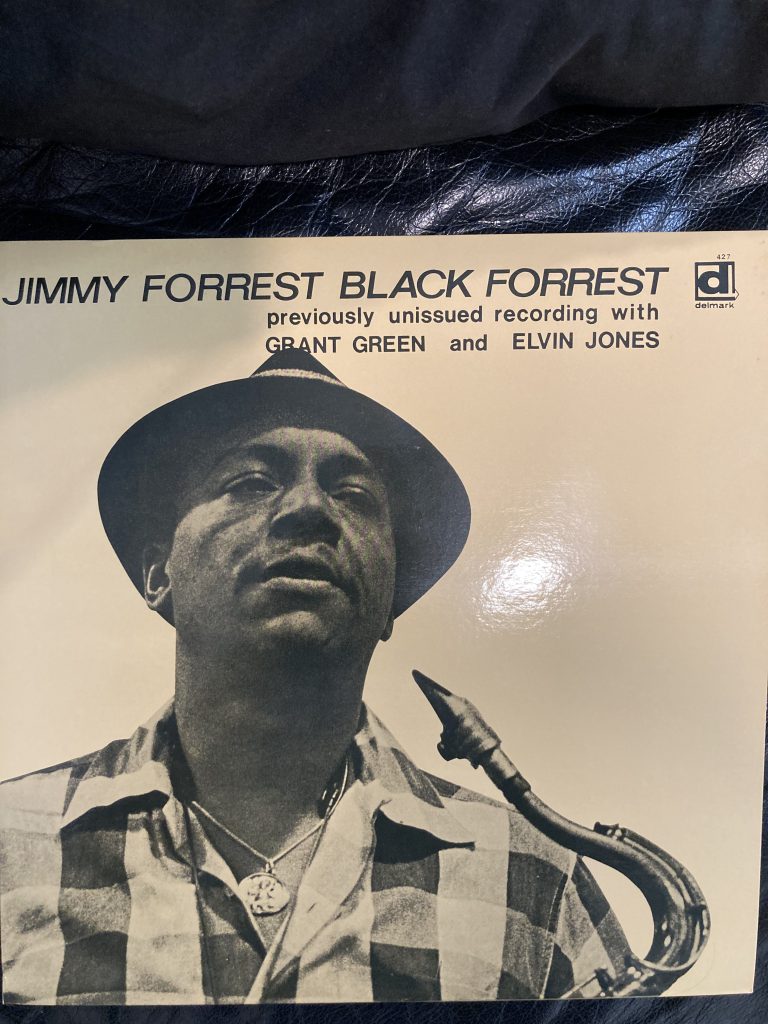

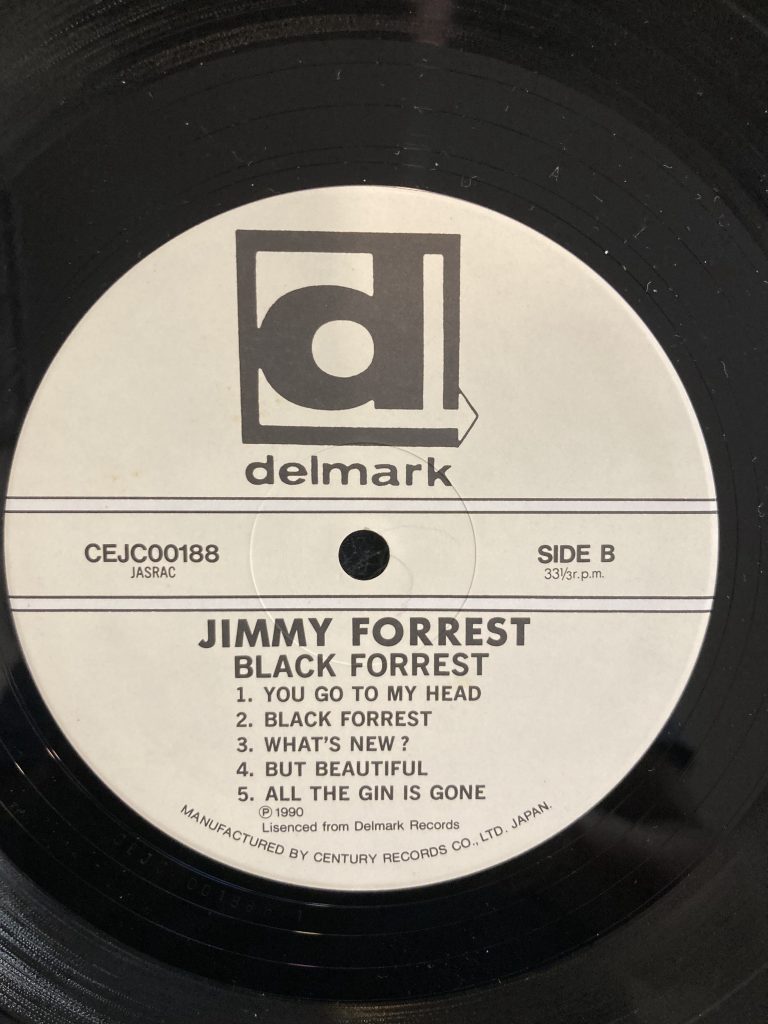
Jimmy Forrest, Black Forrest
- Label: Delmark Records - DL 427
- Format: Vinyl, LP, Album, Stereo
- Country: US
- Released: 1972
- Genre: Jazz
- Style: Hard Bop
Tracklist
- A1 Black Forrest (First Take)
- A2 Dog It
- A3 These Foolish Things
- A4 Sunkenfoal
- B1 You Go To My Head
- B2 Black Forrest
- B3 What's New?
- B4 But Beautiful
- B5 All The Gin Is Gone
Personnel
- Drums - Elvin Jones
- Bass - Gene Ramey
- Guitar - Grant Green (tracks: A3, B4)
- Piano - Harold Mabern
- Tenor Saxophone - Jimmy Forrest
- Producer - Bob Koester
- Recorded By - Stu Black
The music recorded for both these albums was recorded At Hall Recording Studios in Chicago and pressed by Midwest Custom Record Pressing, out of Arnold, Missouri. The Delmark liner notes from the second album, Black Forrest, says, "All material on this album was previously unissued although other takes of a few tunes appeared on our #404 (All The Gin Is Gone). Recorded December 10 and 12, 1959."
I thought it was really fascinating to see (what just might be) the youngest official photo of Grant Green during the start of his recording career:

When I first tried to buy the vinyl versions, I called the Delmark company in Chicago and spoke to the archivist who told me that they haven't had original pressings of tape reels of those sessions for decades. So I went a step further and purchased the CD versions of these two albums, not knowing that I would find pristine Japanese pressings! Anyway, the standard U.S. CDs look like this:
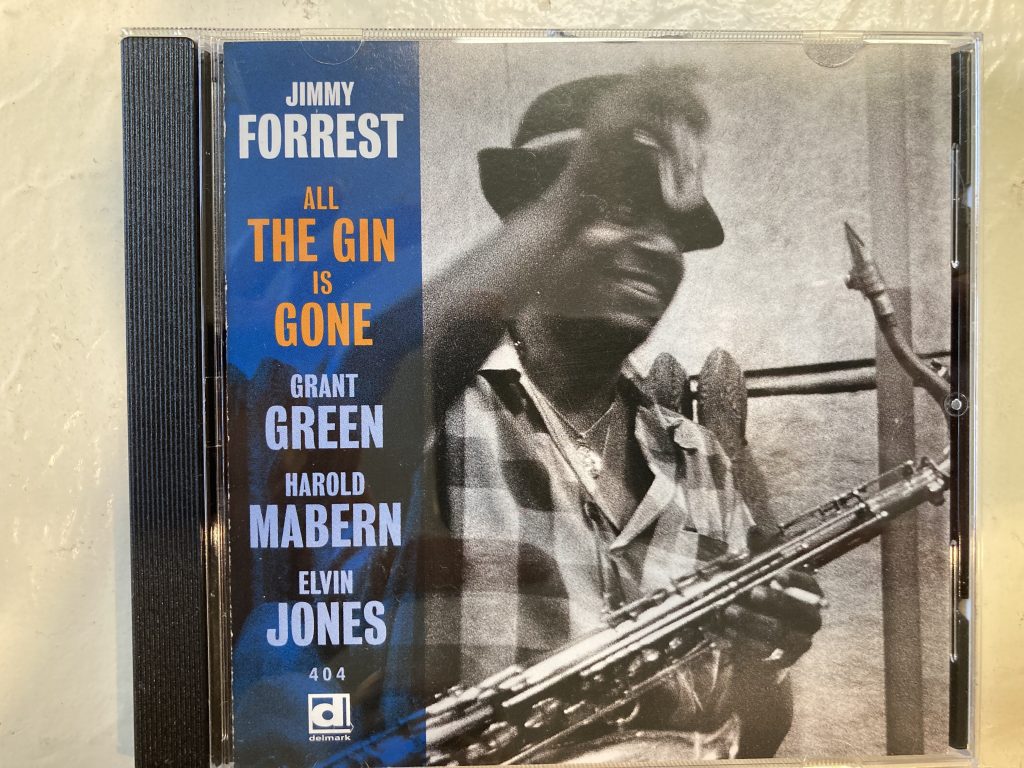
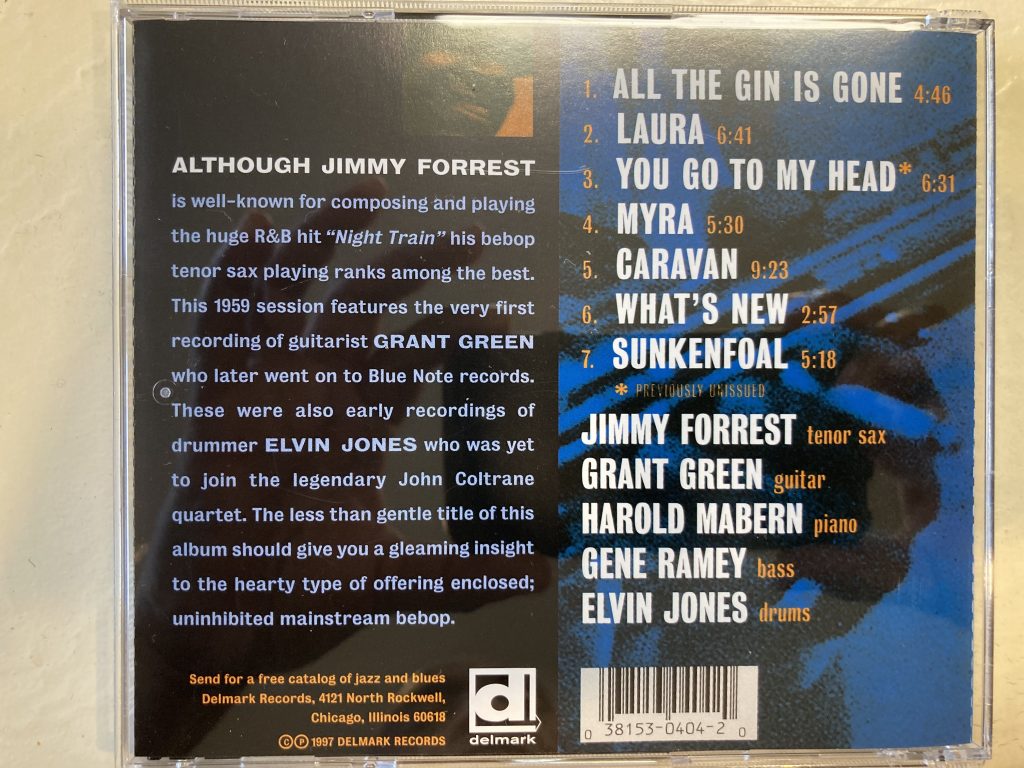

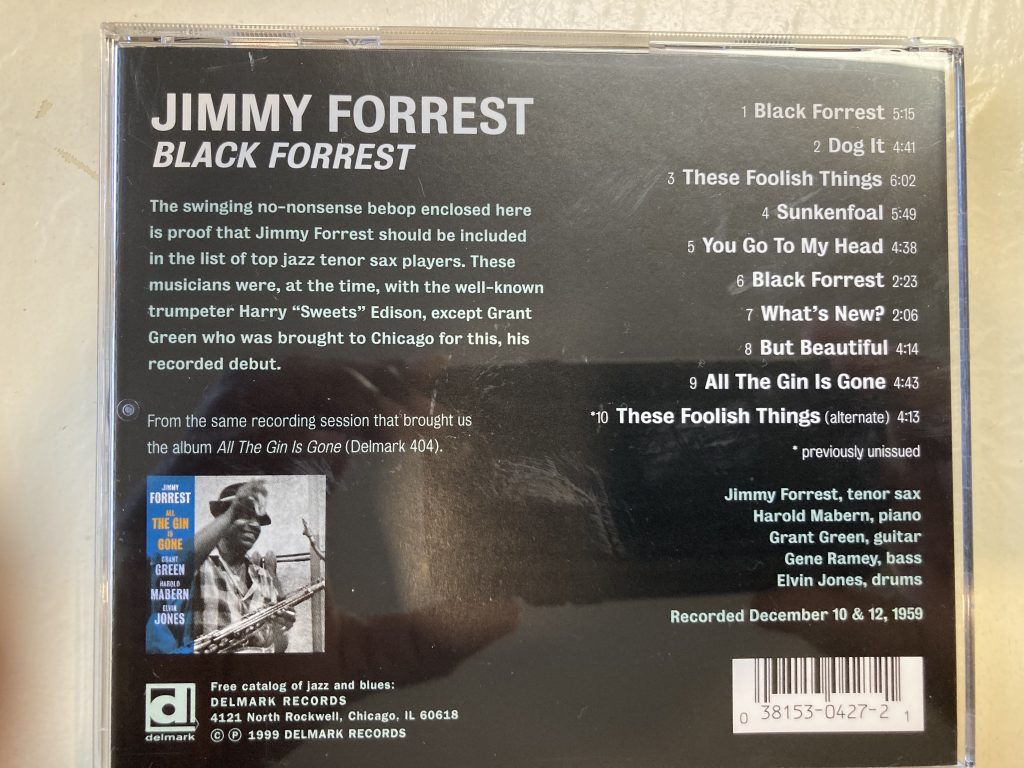
Sometime soon after these albums were recorded in 1959, it was Blue Note label saxophonist Lou Donaldson who convinced Grant Green to leave St. Louis permanently and come to New York City. Lou Donaldson's band was on the road, who happened to be making their way through East St. Louis. According to drummer Al Harewood (quoted on p. 77 in the Sharony Andrews Green biography of Grant), he was traveling with Lou in the car, and suggested they swing by a local hotspot to hear Grant. Grant was performing that night in one of the popular small bars. After hearing Green's electrifying set, Donaldson made the offer for Green to leave St. Louis and come to New York. Green evidently accepted the invitation, and it very well might have taken place at singer/club owner Leo Gooden's bar, because it was Gooden himself who not only bought Green a plane ticket, but also actually came with him! When they landed, Donaldson picked Grant and Leo up at the airport, brought Grant to Alfred Lion directly, and Grant's future at Blue Note was officially underway.
This leads us perfectly into what was widely accepted—for years—as his very first Blue Note session—Grant's First Stand…but there's a whole lot more to this particular story, and we'll get right to it in our next episode!
Until then, keep swingin'.










